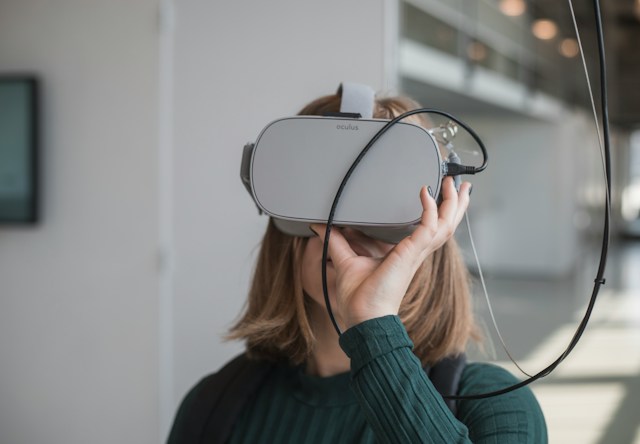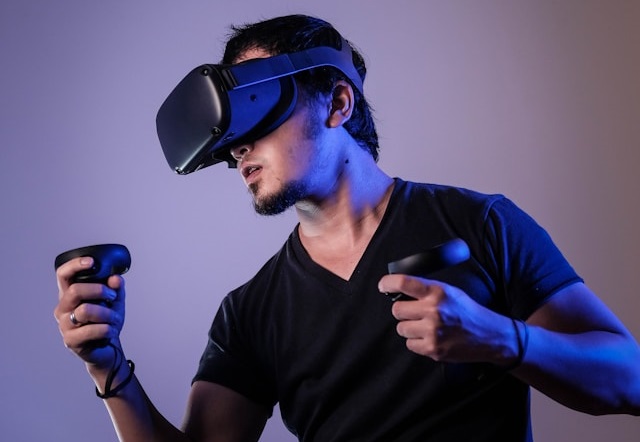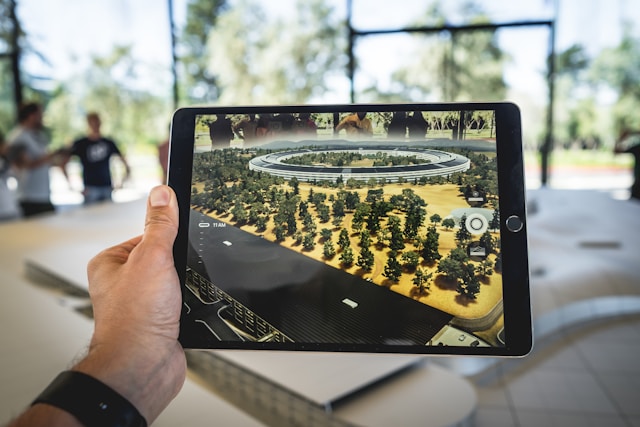Exploring VR, AR, and MR
In the world of immersive technologies, Virtual Reality (VR), Augmented Reality (AR), and Mixed Reality (MR) stand out as groundbreaking innovations that have transformed the way we interact with digital content. These technologies have not only revolutionized entertainment and gaming but also found extensive applications in diverse fields such as education, healthcare, and manufacturing. In this article, we delve into the exploration of VR, AR, and MR by examining their underlying principles, applications, and prospects.
Understanding VR, AR, and MR
1. Virtual Reality (VR)
Virtual Reality immerses users in a computer-generated environment, stimulating their senses to create a sense of presence in a virtual world. This immersive experience is typically delivered through specialized headsets, which track the user's head movements and adjust the displayed content accordingly. VR environments can range from realistic simulations to fantastical realms, offering users the opportunity to explore, interact, and engage with digital content in unprecedented ways.

2. Augmented Reality (AR)
Augmented Reality overlays digital information onto the real world, enhancing the user's perception of their surroundings. Unlike VR, which replaces the physical environment entirely, AR supplements it with digital elements such as text, images, or 3D models. AR applications are commonly accessed through smartphones or wearable devices, utilizing cameras and sensors to integrate virtual content seamlessly into the user's field of view.
3. Mixed Reality (MR)
Mixed Reality combines elements of both VR and AR, allowing virtual and physical objects to coexist and interact in real-time. MR systems incorporate advanced spatial mapping and tracking technologies to merge digital content with the user's environment, enabling highly immersive and interactive experiences. Unlike AR, which superimposes digital content onto the real world, MR blurs the line between the virtual and physical, enabling users to manipulate virtual objects as if they were tangible.
Applications of VR, AR, and MR
1. Entertainment and Gaming
Virtual Reality has fundamentally transformed the landscape of the gaming industry. It offers players unmatched levels of immersion and engagement. By using VR headsets, gamers are transported into meticulously crafted virtual worlds where they can embark on epic adventures. They participate in thrilling simulations and engage with interactive narratives in ways previously unimaginable. From exploring fantastical realms to engaging in adrenaline-pumping action sequences, VR gaming delivers an immersive experience that transcends traditional gaming conventions.
Augmented Reality has also made significant strides in gaming. Popular applications such as Pokemon GO have introduced millions of players worldwide to the concept of augmented reality experiences. By overlaying digital elements onto the real world, AR games blur the line between fantasy and reality. It encourages players to explore their surroundings and interact with virtual characters and objects uniquely. Meanwhile, Mixed Reality holds the promise of taking gaming experiences to even greater heights by seamlessly integrating virtual content into the player's physical environment. With MR, players can interact with virtual objects as if they were tangible, creating truly immersive gameplay environments that bridge the gap between the virtual and physical worlds.

2. Healthcare
VR, AR and MR technologies are revolutionizing patient care by offering novel solutions for medical training, surgical guidance, and rehabilitation. VR simulations have emerged as invaluable tools for training surgeons. These simulations enable surgeons to practice complex procedures in a realistic yet risk-free virtual environment. By providing a platform for repeated practice and refinement of surgical techniques, VR simulations enhance the skills and confidence of medical professionals. Ultimately, it leads to improved patient outcomes and safety.
AR plays a crucial role in enhancing surgical precision and efficiency by overlaying medical imaging data onto the patient's body during procedures. By providing surgeons with real-time visualizations and guidance, AR enables them to navigate complex anatomical structures with greater accuracy and confidence. It can help to reduce the risk of errors and complications. Meanwhile, MR systems hold promise for rehabilitation and therapy, enabling patients to interact with virtual environments to improve motor skills and cognitive functions. Through immersive and engaging experiences, MR therapy programs offer personalized interventions and feedback, empowering patients to achieve better outcomes and quality of life.
3. Manufacturing and Design
VR, AR, and MR technologies are transforming the way products are designed, prototyped, and manufactured. VR simulations enable designers to visualize and iterate on product concepts in a virtual environment, speeding up the design process and reducing costs. AR applications provide real-time information to assembly line workers, guiding them through complex assembly tasks and reducing errors. MR systems enable engineers to collaborate remotely on design projects, manipulating virtual prototypes as if they were physical objects.

4. Education and Training
The integration of VR, AR, and MR technologies in education and training has offered students immersive experiences that transcend the limitations of conventional teaching methods. For example, VR simulations provide students with the opportunity to interact with virtual environments that replicate historical events, scientific phenomena, or complex processes. By engaging multiple senses and facilitating experiential learning, VR simulations enable students to gain a deeper understanding of abstract concepts and develop critical thinking skills in a dynamic manner.
Similarly, AR applications enhance traditional educational materials by overlaying supplementary information, such as 3D models and animations, onto physical objects or environments. By seamlessly integrating digital content with the real world, AR enriches learning experiences and encourages active participation and exploration. Furthermore, MR systems enable professionals in fields such as aviation and engineering to engage in realistic training scenarios that simulate complex real-world environments. Through hands-on practice and simulation-based learning, MR training programs empower professionals to develop and refine their skills in a safe and controlled setting, ultimately improving performance and outcomes in their respective fields.
Future Prospects and Challenges
The future of VR, AR, and MR holds tremendous promise, with advancements in hardware, software, and content creation driving innovation across industries. The development of more immersive displays, haptic feedback systems, and spatial tracking technologies will further enhance the user experience and expand the possibilities of these technologies. Additionally, the integration of artificial intelligence and machine learning algorithms will enable more intelligent and responsive virtual environments, tailored to the user's preferences and behavior.
However, several challenges must be addressed to realize the full potential of VR, AR, and MR. These include issues related to hardware limitations, such as the bulkiness and cost of current devices, as well as concerns regarding privacy, security, and ethical implications. Furthermore, the development of compelling and engaging content remains crucial to driving adoption and sustaining interest in these technologies.

Conclusion
In conclusion, Virtual Reality, Augmented Reality, and Mixed Reality represent transformative technologies that are reshaping the way we interact with digital content and the physical world. From entertainment and gaming to education, healthcare, and beyond, the applications of VR, AR, and MR are vast and diverse. They offer unprecedented opportunities for innovation and advancement. As we continue to push the boundaries of immersive technology, the future holds limitless possibilities for creating richer and more interactive experiences that will redefine the way we live, work, and play.